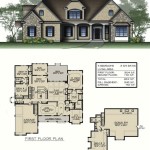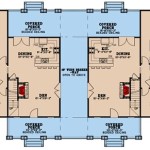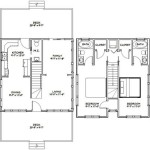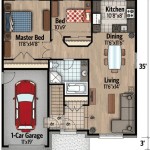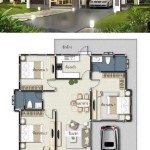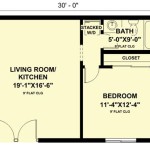Floor Plans For A Barn
A barn is a vital structure for any farm or equestrian facility, providing shelter and storage for livestock, hay, and equipment. When planning a barn, it's crucial to consider the specific needs of the animals and operations that will be housed within it. Here are some key considerations for designing floor plans for a barn:
Size and Layout: The size and layout of the barn will depend on the number and type of animals it will house, as well as the amount of storage space required. A horse barn, for example, typically requires more space per animal than a cattle barn, and may include stalls, a tack room, and a wash bay. It's essential to plan the layout efficiently to optimize space utilization and animal comfort.
Ventilation and Lighting: Proper ventilation is vital for maintaining a healthy environment for animals. The barn should be designed to provide adequate air circulation, prevent drafts, and control moisture. Natural ventilation through windows and vents is often sufficient, but mechanical ventilation systems may be necessary in certain climates. Ample lighting is also important, both natural and artificial, to ensure a comfortable and safe space for animals and workers.
Drainage and Flooring: The flooring of the barn should be durable, non-slip, and easy to clean. Concrete is a common choice for barn floors, as it is strong and moisture-resistant. Slope the floors gently towards drains to ensure proper drainage and prevent standing water, which can lead to health issues for animals.
Stalls and Pens: The design of stalls and pens for animals will vary depending on their species and needs. Horse stalls should be spacious enough for the horses to move around comfortably and include a feed and water trough. Cattle pens should provide adequate space for the animals to rest, eat, and move freely.
Hay and Feed Storage: Ample storage space should be allocated for hay and feed. Hay can be stored in a loft above the stalls or pens, or in a separate hay barn. Feed storage should be secure and protected from pests and moisture.
Equipment and Utility Areas: Designate areas for storing equipment such as tractors, tools, and grooming supplies. Utility areas may include a tack room for horse equipment, a wash bay for cleaning animals, and a workshop for repairs and maintenance.
Safety and Accessibility: Safety should be a paramount consideration in barn design. Ensure there are adequate fire exits and smoke detectors, and that all electrical wiring and equipment are up to code. The barn should be easily accessible for both animals and workers, with wide doorways and ramps where necessary.
Creating well-designed floor plans for a barn is essential for the health, comfort, and productivity of animals and the efficiency of barn operations. By considering these key factors, you can create a functional and practical barn that meets the specific needs of your farm or equestrian facility.

Easy Horse Barn Floor Plan Design Designs

Horse Barn Plans Outbuilding Plan 006b 0001 At Www Theprojectplan Com

Horse Barn Building Plans Floor Fcpbarns Com

Horse Barn Plans With Living Quarters Cad Pro

Barns And Buildings Quality Horse All Wood Custom Barn Homes Rustic Home Facility Stalls

Yankee Barn Homes Builds And So Much More

Barns And Buildings Quality Horse All Wood Custom Barn Homes Rustic Home Facility Stalls

Horse Barn Floor Plan Layout Tips
:max_bytes(150000):strip_icc()/general-free-barn-plan-lsu-agcenter-56af70e33df78cf772c47dda.png?strip=all)
7 Free Barn Plans

Barn Plans Stable Designs Building For Horse Housing Stablewise

